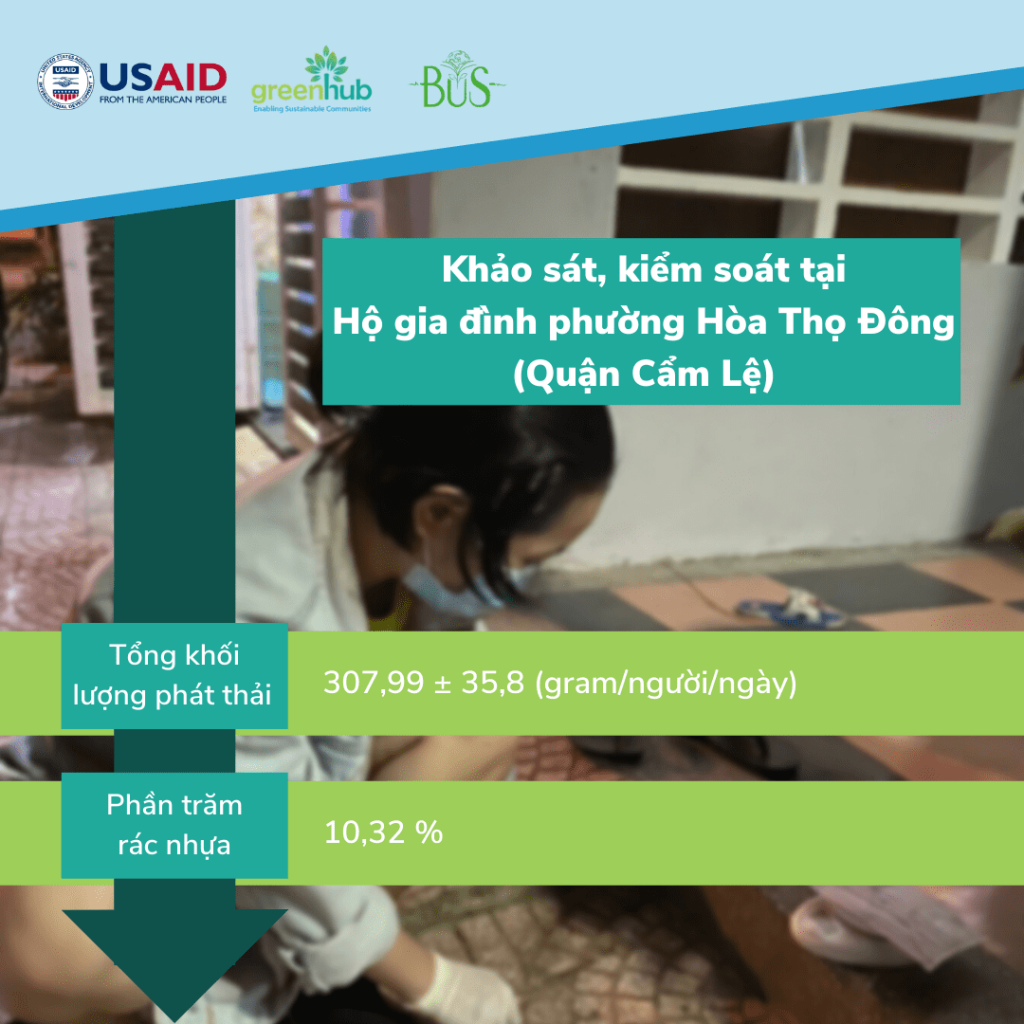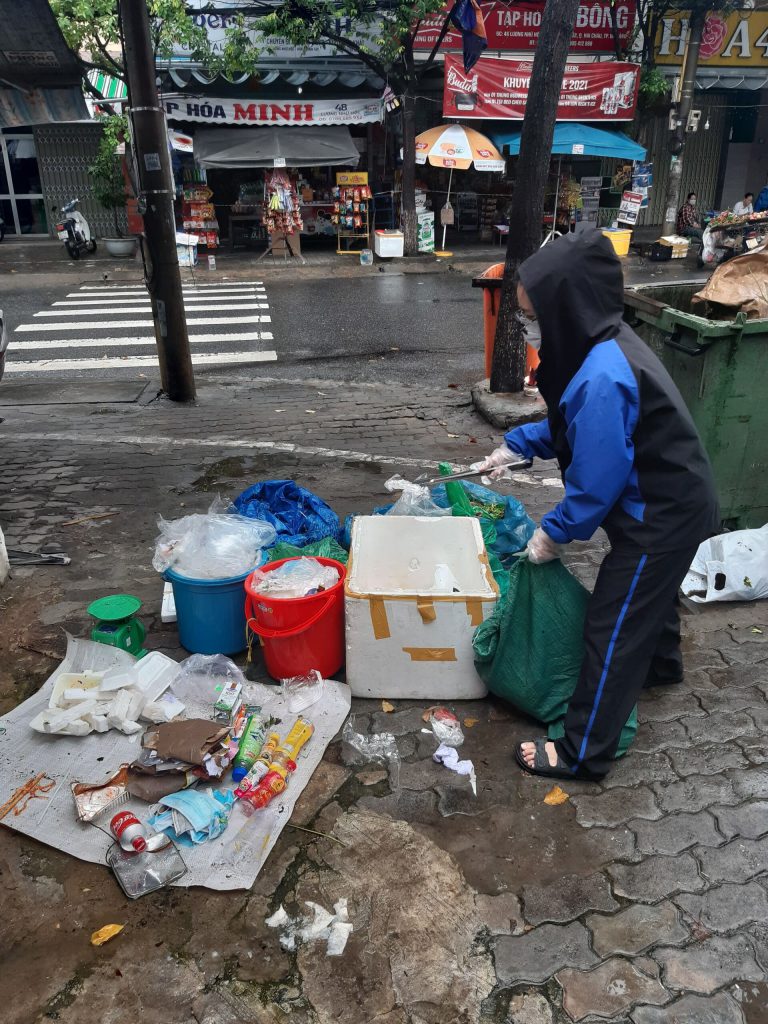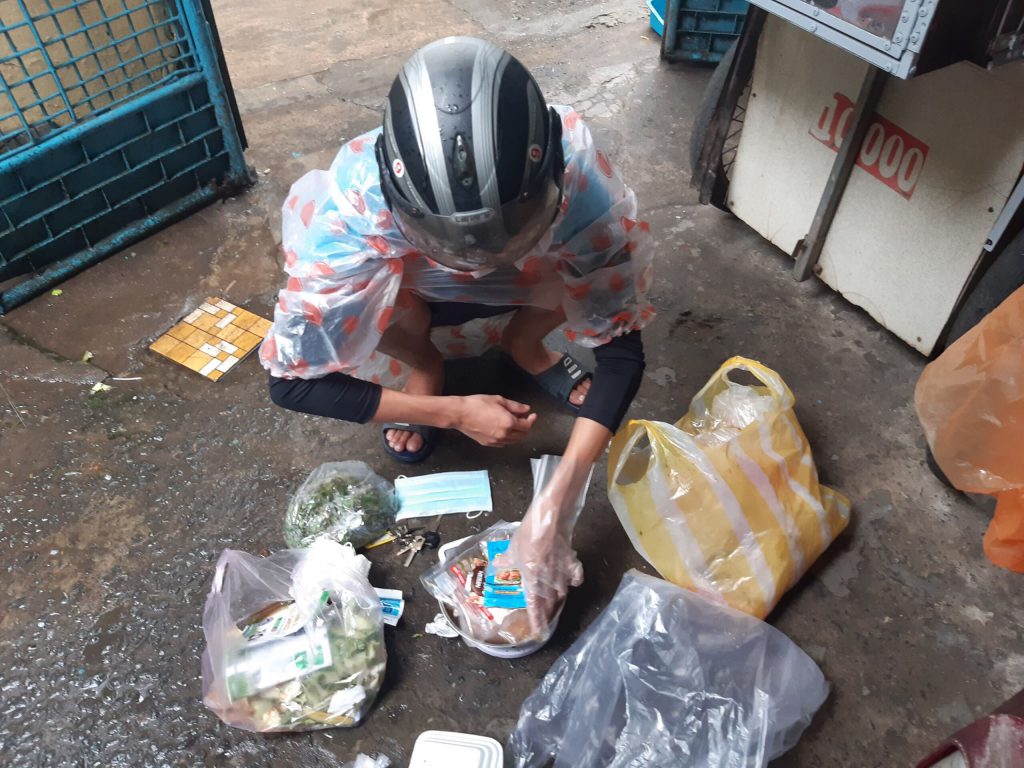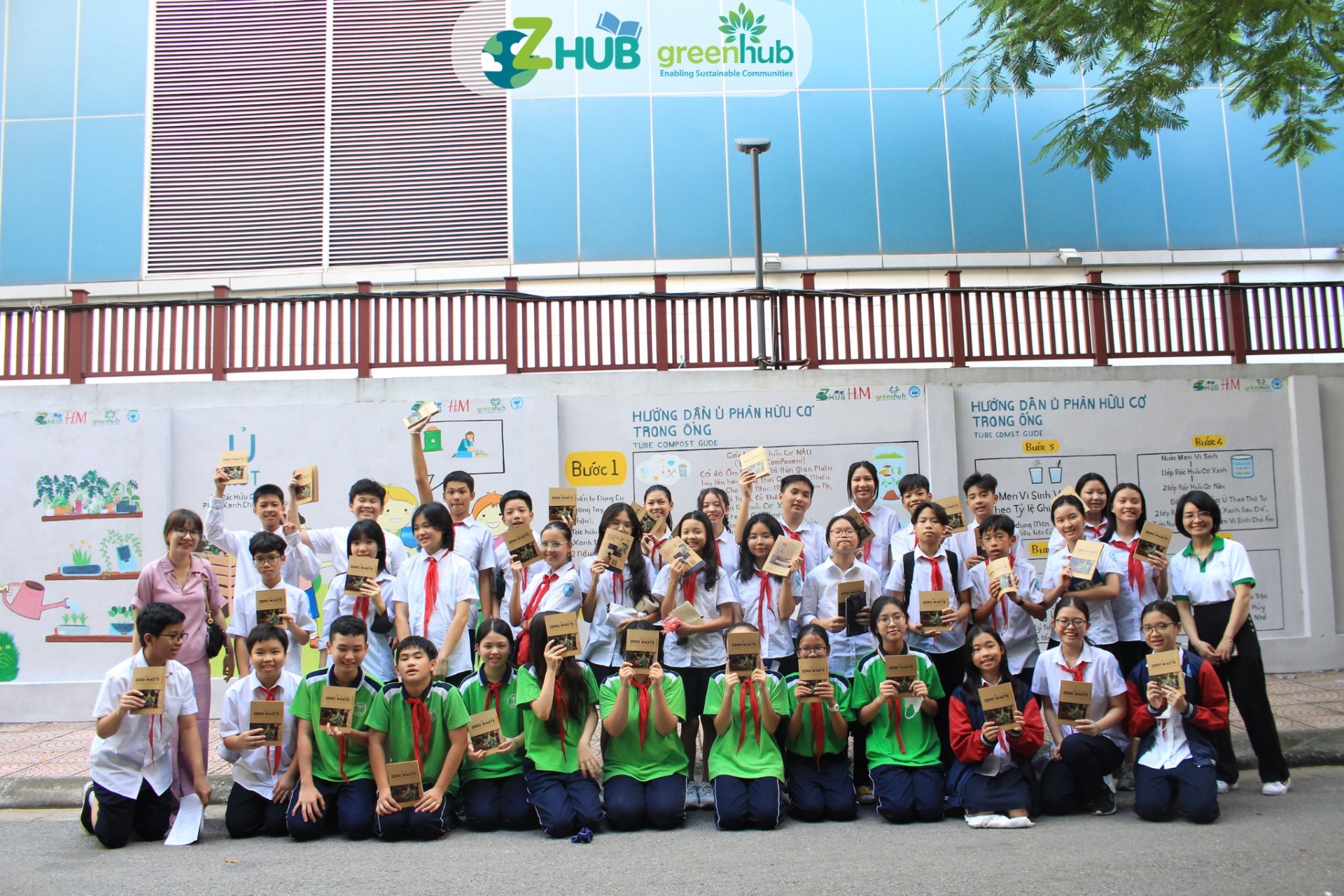Since the beginning of October, the Center for Supporting Green Development (GreenHub), in collaboration with the Building Up Sustainability Center (BUS), has carried out a survey and monitored waste at households in residential, commercial centers, and schools in the area of 02 districts of Hai Chau and Cam Le in Da Nang city. The data collected from the monitoring provides a preliminary overview of the status of plastic waste in the two districts, thereby serving as a foundational database for developing Action Plans on Plastic Waste Management from 2021 to 2025 in Hai Chau and Cam Le districts.
Although the situation is not supported and Da Nang has just loosened up its activities after a long separation, the survey team and its spirit of efforts have completed the task and collected the results. The most accurate results reflected the actual situation of waste emissions at the survey site.

The survey and implementation show that the emission rate of 4 groups of waste accounts for the highest percentage, including organic waste, nylon bags, mixed packaging, and single-use plastic. Also, due to the complicated disease situation, the amount of medical waste (such as disposable medical masks) appeared in more households in the area.
Sharing with the survey team, Ms. Nam – from a household in Hoa Phat ward – said: “Hopefully, the city has policies and guidelines for specific classification so that each household can follow. Every time I hear a call for me to ask for trash from the neighborhood, I’m ready right away!” That enthusiasm added a source of positive energy, helping the team carry out the survey and management in adverse weather conditions.
1. Survey and audit at households in Hoa Tho Dong ward, Cam Le district:

The average total volume of solid waste emissions of households is 307.99 ± 35.8 grams/person/day. In which plastic waste accounts for about 10.32%.


“I belong to group 2 – undertake the monitoring of domestic solid waste generated in residential households in two wards of Cam Le District within seven days. During the implementation process, the team received positive feedback and support from every one of the households participating in the audit. In the first days, they were still quite surprised and worried about the health of the team members when implementing a garbage audit, so when asked to classify garbage into two basic types, such as “dry garbage” and “wet garbage,” most people would agree.”
2. Survey and audit at Nguyen Tri Phuong market, Hai Chau district:


According to the audit results, most of the solid waste is not sorted before the small traders put it in the garbage dump of the market. Plastic waste accounts for about 15.15% of the total solid waste generated. Single-use plastic has the highest emission rate, followed by HDPE/LDPE, and plastic bags, which arise mainly from the trading activities of small traders in the market.

3. Survey and audit at households in Hai Chau II ward, Hai Chau district:

The total average volume of solid waste emissions of households is 330.15 ± 32.2 grams/person/day. According to the survey, the average amount of plastic waste generated is about 12.61%, in which plastic bags account for the most significant proportion, followed by single-use plastic. Plastic waste arises mainly from the demand to eat, pack, and store food.



